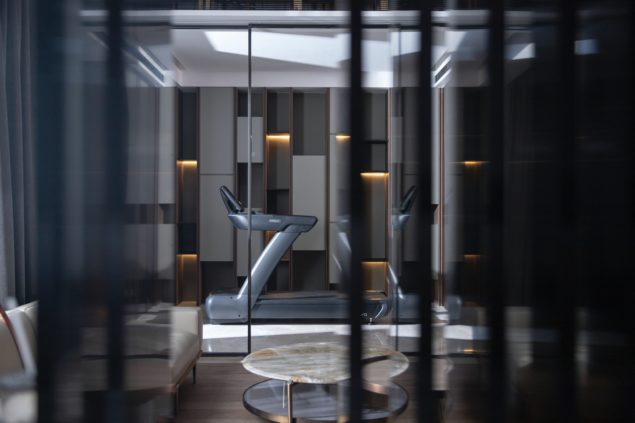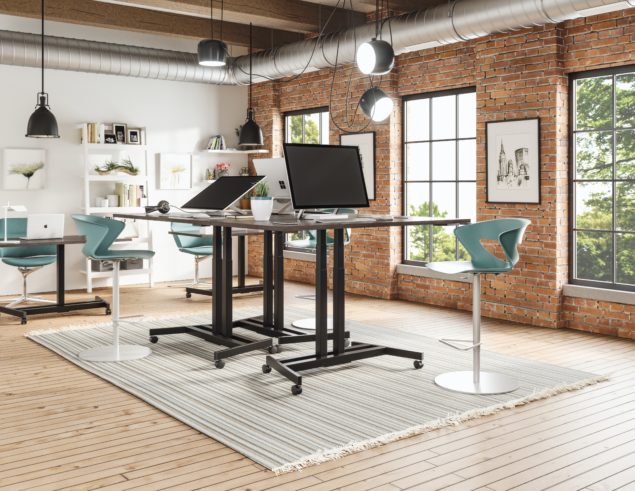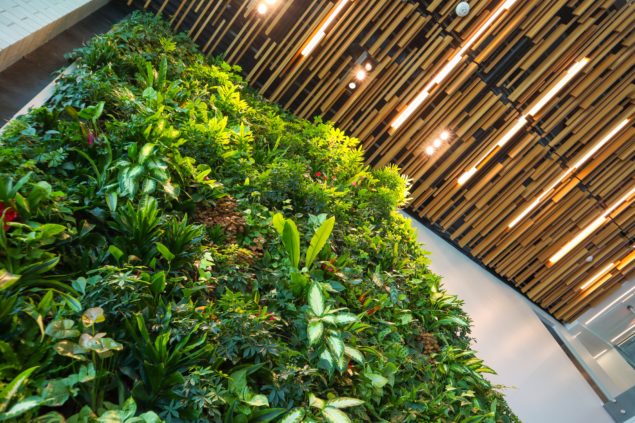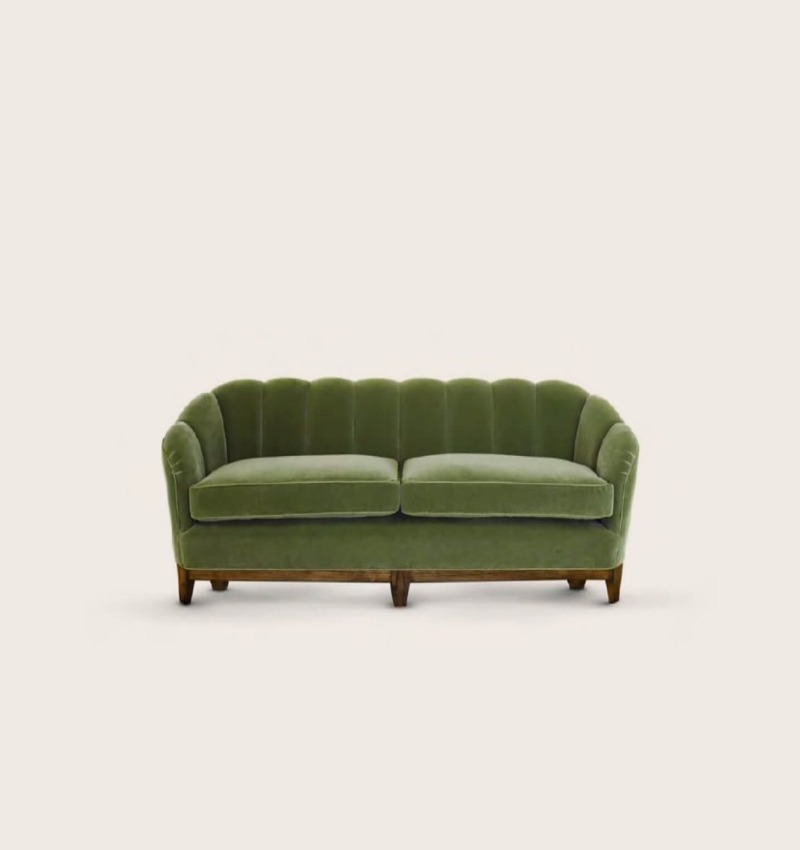Interior Design at home and work: what you should be marketing for today
As the boundaries between home and office have broken down after years of lockdowns and quarantines, it’s clear that a home isn’t just a place to live any more – it’s a workplace, a gym, a studio, place to unwind and relax – and people are wanting spaces that reflect this new normal.
It’s not just domestic spaces that have undergone a makeover. While physical offices are not wholly defunct, with many companies utilising remote and hybrid working, attracting people back to corporate environments after years of WFH means people are thinking about how to transform these spaces too. From adaptable, wellness-infused architecture and biophilic interiors to homely design and an emphasis on personalisation and collaboration, this is the office 2.0.
How will urban and residential spaces evolve to reflect the fused future of work, life and play? And how can your company tap into consumer wants with your marketing plans? Let’s explore how in more detail below.
Workhouse
In the world of WFH, our shared spaces are more relevant than they’ve ever been before. Research from U.S. online interior design service, Modsy, has shown that working from home has already had a major impact on our decor and design schemes, with limited private space to work was the number one frustration. To thrive in a remote working environment with the existing – and often makeshift – home office setup, consumers need sophisticated design solutions that will help them to adapt, flex and compartmentalise their domestic spaces with ease.
Flexibility Matters
While creating a private, formal workspace is more important than ever before, we are still trying to shoehorn these into our leisure and domestic spaces, meaning compromise is inevitable.
The answer? Flexibility.
Designated rooms will shirk their labels and become more loosely defined, with furnishings, design elements, and materials following suit. Multi-functional spaces are key to successfully redesigning home layouts, filled with products that enable ease of adaptation. With more than one person working from home, as is often the case, it is important to create multiple workspaces that afford space and privacy to all. One great development of this change has been the introduction of day-use hotel rooms for remote workers, for example (as seen at Rosewood, Bvlgari and Dorchester, it was one of the stand-out travel and hospitality trends of the pandemic) enabling some people to separate work from home whilst working remotely.
Shape-Shifting Solutions
Three in five US adults say it’s becoming harder to carve out personal space to relax and find joy at home, with 79% reconfiguring at least one room for remote working (Xiaomi, 2021). And while a third of global consumers would like to have a dedicated study or home-working space (Ikea, 2020), about the same proportion (30%) are working in their living rooms, while 17% are using the bedroom (TalentLMS, 2021).
Ironically, open-plan layouts loved by modern homeowners will be reconfigured back into the more old-fashioned formats, for enhanced privacy and sound control. The greater need for zoning and partitioning interiors into semi-private and soundproofed areas is fuelling the development of products such as modular, freestanding screens, which help create a broken layout in open-plan rooms. With movable screens, walls, panels people are able to change the dynamics of a space in an instant.
While the incorporation of built-in desks and workspaces into bedrooms and living rooms will be the norm in new builds, existing homes will incorporate the likes of foldout workstations, as seen at Finnish studio Evavaara Design. This smart piece of design transforms a desk into a cabinet, capable of roving from room to room thanks to its swivel wheels. Further ‘morphing’ solutions include high tech beds that disappear into ceilings, desks that fold into the wall and tables that open to reveal storage or change height to cater to various uses and needs, some great examples of which are now in development by Marriott’s Design Lab in collaboration with space-saving architecture start-up, Ori.
The robotics company unveiled three transformable concepts at the recent Consumer Electronics Show in Las Vegas. These include the Cloud Bed, Sofa Edition, Cloud Bed, Table Edition and Pocket Closet, all of which allow rooms to be expanded and reconfigured in imaginative ways.
“All it takes is the touch of a button, a tap on your phone or a voice command to see walls move, beds float and rooms slide in and out of the scene, effortlessly responding to the rhythm and flow of modern life,” Ori told Globetrender.
Transformative interiors are also being pioneered by Dutch brand Zoku, showcasing customisable interiors via its coworking hotels in Vienna and Amsterdam – think pull-up rings for workouts, raised beds that can be hidden behind a sliding door and steps that retract to increase living space.
Slim Gym
Since the pandemic began, people have been placing higher priority on their health and wellbeing. This ties into the findings of research by global design firm Gensler points to workers prioritising health-related amenities in the workplace, from gyms and green space to medical services (Fast Company, 2021), as people look to maintain their fitness whether at home or in work after getting into the routine of at-home virtual workouts, gym classes and online PT sessions (read more about the digital fitness revolution on Matter of Form).
The likes of Hydrow have reported year on year sales up by 500%, meanwhile Tonal, the wall-mounted, strength-training home gym, reported a 700 percent year-over-year increase in sales.
While a home gym used to be considered a luxury, creating a space, however humble, for exercise and equipment storage is now quite common in households. Hidden monitors and great speakers are further considerations to take the set up from simple to smart.

Transformative Offices
With so much new focus on redesigning the WFH experience, it’s easy to overlook how offices are mutating too. Recent studies show a deterioration of team dynamics when people work remotely full-time, with two-thirds of employers struggling to maintain staff morale, and more than one-third facing challenges maintaining company culture (Forbes, 2021).
With this in mind, it looks like hybrid working is the future for many of us, and designers are taking inspiration from the comfort of WFH to lure employees back to their old stomping grounds. The top two reasons why people globally want to return to the workplace are to reconnect with colleagues and to feel a sense of shared purpose, meanwhile nine in 10 nationalities rank a “quiet, professional environment” among their top five reasons for wishing to return to the workplace (Steelcase, 2021).
So, expect casual interiors that foster collaborative work and in-person communication, as seen Stuttgart-based Ippolito Fleitz Group, which has used bold colours and a variety of textures and seating styles to create hygge meeting spots for a new office space in Germany, and the installation of flexible partitions to create instant privacy without compromising on the flow of a space.
Using the analogy of a club to shape the post-pandemic office, Swiss furniture company Vitra is transforming its own HQ to test drive its Club Office concept, which revolves around spaces for collaboration, learning and socialising, meanwhile San Francisco-based interior design practice Studio O+A recently introduced the typology of the Home Room to its workplace re-entry scenarios. Besides providing transitional functions (such as lockers for storing outerwear and personal belongings) before employees enter the main, hot-desking-based office floor, it offers homely headquarters for staff to personalise and celebrate team culture.

Outside In
The trend for biophilic architecture was already blowing up pre-Covid, now accelerated to new heights by the pandemic, a time when many of us sought solace in nature. With its proven impact on our mental health, the principles of biophilic design provide guidance for creating sustainable, soothing and mentally stimulating spaces.
Looking for inspiration? Hotels and co-working spaces are already hot on the trend; the likes of Second Home Hollywood features glass-walled pods set among gardens and clusters of palms, helping members feel a greater connection with nature, meanwhile Uncommon, a group of London-based co-working spaces has plants and and foliage embedded into the interiors and a planned opening in Holborn entirely dedicated to promoting wellness through clever use of biophilic design, sensory stimulants and enhanced ergonomics.
Unveiled in August 2021, the 1 Hotel in Toronto is described as “Canada’s first mission-driven hotel that celebrates the beauty of Toronto’s natural environment and offers an urban oasis in the heart of the city”. With a material palette that takes inspiration from the “muted colours of Lake Ontario and the contrasting tones of the passing seasons”, featuring reclaimed timber, native plants, board-formed concrete and local marble, it’s an excellent example of the push to bring the outdoors in.
We expect domestic spaces to jump on plant-centric living, with room schemes that move on from ubiquitous succulents and planters and capitalise on a connection to the natural world. As we usher in exterior spaces and greenery as part of everyday living – from decking and balconies, to living walls and bathrooms, the same ethos will extend into products too, with consumers and designers increasingly exploring organic patterns and textures to trigger the relaxing experience of being in nature. Whether its Country Floors’ Scape and Terrain collection of ceramic tiles that evoke seascapes, landscapes, clouds or rolling mist to biophilic floor coverings by Australia’s Tsar Carpets, and London-based studio Glithero’s botanical patterns on handmade rugs and ceramic tiles, expect to see more nature reminiscence at home.

A Light Touch
An enhanced focus on wellbeing practices is one of the more positive consequences of the pandemic, and we are developing ever more sophisticated solutions to achieve and maintain optimal health in the home. Circadian rhythm regulates many aspects of health, including digestion, hormones and immunity, but not all of us are lucky enough to live in spaces that are bathed in natural light – or in places where the sun shines frequently. To combat this, designers are incorporating advanced artificial solutions into the home, such as Oculus, a circular LED by Finnish brand Light Cognitive, a light that mimics the sky, immersing everything around it in ‘natural light’ that shifts in colour as the day unfolds. Our circadian rhythms are also being considered by London-based practice Coffey Architects, via a façade of perforated aluminium panels that create shadows akin to ‘moving wallpaper’ to conjure a feeling of being outdoors.
The Bottom Line
Brands and solutions that help home workers maximise their domestic spaces and allow them to adapt and flex to today’s multitasking WFH setups are big business, with transformative product design, smart tech and considered fabrics and lighting savvy the way to win. Considered wellness tools, nature’s influence and progressive principles for optimising healthy living will be further integrated into our homes to provide a sense of nourishment, perspective and relaxation.
But with so many of us missing the camaraderie of the office, the same principles will be applied there too, this time to foster collaboration, communication, optional privacy and a sense of comfort. In this hybrid working model, each environment will learn and borrow from the other to create a new blueprint for thriving at work, wherever that may be.
3 Marketing Tips
♦ Understand what your audience cares about, and focus on that in your consumer messaging
- We recommend furniture and interior companies review their marketing plans through the lens of the changed consumer needs – focus on promoting things like:
◊ Products that are adaptive
◊ Tips and tricks for making spaces multi-use
◊ How to bring the outdoors in
◊ Lighting features
◊ Storage solutions
- To understand what your specific customers care about most – talk to them and use that insight to inform what you should be prioritising in communications.
♦Invest in creative for key landing pages, social and advertising
- As people’s expectations of their environments have changed, so should the visuals you use, likelihood is most companies should invest in new assets to be promoted across their channels to visually show they meet consumers’ new needs.
♦Update your keyword targets
- Review organic performance, review opportunities for growth and work with your marketing team or agency on a strategy to build out those areas, which could include new:
◊ Paid ad groups
◊ Blog articles
◊ Landing pages
◊ eCRM target groups
◊ Social targeting
◊ PR target publications




